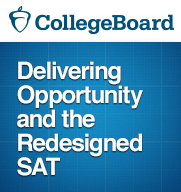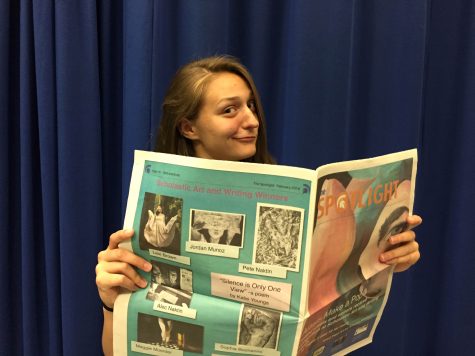Change Is Coming In Standardized Testing
Some serious changes are in store for the dreaded SAT starting in the spring of 2016. Eight key elements will be implemented to measure how ready a student is for college.

In the spring of 2016, the SAT will once again rear its ugly head…but this time, it’ll be different. Eight key changes are implemented with the new SAT, designed to test what matters most for a students’ success and readiness for college.
“The fact that they’re bringing in a wider variety of topics, [like] what kids are seeing in their classes, from literature, science, history – you know they’re making it a much more relevant test that students are able to relate to based on what their high school curriculum is like,” guidance counselor Mrs. Tamme Westbrooks said.
The new SAT will revolve and condense around eight changes: relevant words in context, command of evidence, essay analyzing a source, focus on math that matters most, problems grounded in real-world contexts, analysis in science and in history/social studies, and the founding documents and great global conversation.
“There are still going to be students that struggle,” Mrs. Westbrooks said. “SAT prep is still going to be important.”
“Relevant words in context” means that instead of memorizing possible SAT words, the test taker instead has to decipher the word’s meaning within the context it is used. The “Command of Evidence” part comes into play when analyzing different texts; students will need to be able to interpret, analyze, and use the articles, charts, or pictures given to answer questions.
According to College Board, “the new essay section is designed to support high school students and teachers as they cultivate close reading, careful analysis, and clear writing.”
“Essay and Analyzing a Source” relates to the now optional essay portion of the SAT. A passage will be presented, and students will have to explain how the author builds an argument to persuade an audience. What could be analyzed is the author’s use of evidence, reasoning, and the stylistic and persuasive elements of the passage.
“Focus on math that matters most” is centered on three areas of math, one of these areas being problem solving and data analysis. This tests students’ understanding of ratios, percentages, and proportional reasoning to solve problems in science, social science, and career contexts.
“They’re trying to make the problems more like the math questions you’d see in your math class,” SAT math prep teacher Mrs. Ronette Mays said.
Then, there’s the “Heart of Algebra,” which focuses on students being able to do linear equations and systems. The last section is “Passport to Advanced Math,” which focuses on how well a student can manipulate complex equations to get the right answer.
“The other big change with math is that part of it will be with a calculator, and some will be without a calculator,” Westbrooks said.
The fifth change focuses on “Problems Grounded in Real-World Contexts.” This change broadens what types of passages will be found, and includes charts, graphs and passages that could be found in science, social studies, and other majors or careers. The math section will also have multi-step problems or scenarios placed in real life context, which students will have to analyze in order to answer multiple questions correctly.
“Analysis in Science and in History/Social Studies” involves students answering questions in science, history, and social studies but using their reading, math, writing, and language skills to answer those questions.
According to College Board, “Questions will require [students] to read and comprehend texts, revise texts to be consistent with data presented in graphics, synthesize information presented through texts and graphics, and solve problems based in science and social science.”
The seventh change is a simple one. This change is that the founding documents of the U.S., or texts from global conversation, will be put into the SAT. This is to widen the scope of articles within the SAT, and to help students ruminate on these texts.
“[The old SAT] had its advantages and disadvantages. There was no correlation between SAT score and how well you’re going to do in college,” Mays said. “You do need a test of some sort to put everybody on the same playing field, because schools aren’t all the same.”
Another difference between the old SAT and the 2016 spring SAT is that there will be no penalty for an incorrect answer. The new SAT will take slightly more time — a total of three hours and 50 minutes — because of the optional essay adding five minutes. There will only be four answer choices instead of five on multiple-choice questions as well.
“The SAT prep course that we run here at the high school in the fall will follow the old SAT,” Mrs. Westbrooks said, “and in the spring it will be preparing students for the new SAT.”
Although SLHS is still running an SAT prep course, it is not yet known who will teach these prep courses.
“I feel very bad for students that struggle and have struggled with the SAT, and I hope that this format enables more students to be successful at it,” Mrs. Westbrooks said.
Practice problems and more information on the new SAT can be found on the College Board website. Most of the information within this article has also been found within the College Board website from the following link: https://www.collegeboard.org/delivering-opportunity/sat/redesign/compare-tests

Allison Borelli graduates as a four-year Spotlight staff member. She has been a student reporter all four years, and features editor for two.
Outside...

